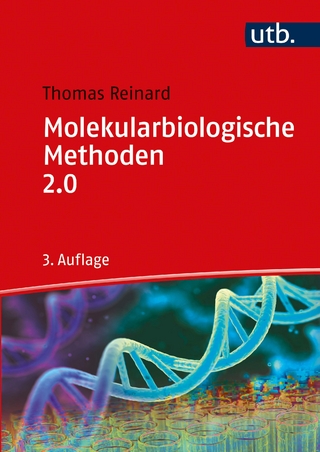
The Microbial Models of Molecular Biology
From Genes to Genomes
Seiten
2003
Oxford University Press (Verlag)
978-0-19-515436-8 (ISBN)
Oxford University Press (Verlag)
978-0-19-515436-8 (ISBN)
Explains the role of simple biological model systems in the growth of molecular biology. This book presents the history of molecular biology, tracing the work in bacteriophages in E coli, the role of other prokaryotic systems, the protozoan and algal models, and the move into eukaryotes with the fungal systems - Neurospora, Aspergillus and yeast.
This book explains the role of simple biological model systems in the growth of molecular biology. Essentially the whole history of molecular biology is presented here, tracing the work in bacteriophages in E. coli, the role of other prokaryotic systems, and also the protozoan and algal models - Paramecium and Chlamydomonas, primarily - and the move into eukaryotes with the fungal systems - Neurospora, Aspergillus and yeast. Each model was selected for its appropriateness for asking a given class of questions, and each spawned its own community of investigators. Some individuals made the transition to a new model over time, and remnant communities of investigators continue to pursue questions in all these models, as the cutting edge of molecular biological research flowed onward from model to model, and onward into higher organisms and, ultimately, mouse and man.
This book explains the role of simple biological model systems in the growth of molecular biology. Essentially the whole history of molecular biology is presented here, tracing the work in bacteriophages in E. coli, the role of other prokaryotic systems, and also the protozoan and algal models - Paramecium and Chlamydomonas, primarily - and the move into eukaryotes with the fungal systems - Neurospora, Aspergillus and yeast. Each model was selected for its appropriateness for asking a given class of questions, and each spawned its own community of investigators. Some individuals made the transition to a new model over time, and remnant communities of investigators continue to pursue questions in all these models, as the cutting edge of molecular biological research flowed onward from model to model, and onward into higher organisms and, ultimately, mouse and man.
1: Model systems, model organisms
2: Morgan's progeny
3: Neurospora
4: Aspergillus
5: Yeast
6: Leaving the fungi
7: Escherichia coli
8: The T bacteriophages
9: Temperate phage and transduction
10: DNA
11: Prokaryotes take center stage
12: Prokaryotes: Later contributions
13: Cytoplasmic inheritance: The ciliates
14: Organelle genetics: Yeast and Chlamydomonas
15: Yeast becomes a supermodel
16: The Filamentous fungi: Eclipse and renewal
17: The role of biochemistry
18: Genomics
19: The age of model organisms
Appendix 1. Life cycles and genetic principles
Appendix 2. Macromolecules and the Central Dogma
Appendix 3. Genetic engineering
Notes
References
Name index
Subject index
| Erscheint lt. Verlag | 1.10.2003 |
|---|---|
| Zusatzinfo | numerous figures & halftones |
| Verlagsort | Oxford |
| Sprache | englisch |
| Maße | 162 x 241 mm |
| Gewicht | 708 g |
| Themenwelt | Naturwissenschaften ► Biologie ► Genetik / Molekularbiologie |
| Naturwissenschaften ► Biologie ► Zellbiologie | |
| ISBN-10 | 0-19-515436-3 / 0195154363 |
| ISBN-13 | 978-0-19-515436-8 / 9780195154368 |
| Zustand | Neuware |
| Informationen gemäß Produktsicherheitsverordnung (GPSR) | |
| Haben Sie eine Frage zum Produkt? |
Mehr entdecken
aus dem Bereich
aus dem Bereich
50 Meilensteine der Genetik
Buch | Hardcover (2022)
Librero b.v. (Verlag)
9,95 €


